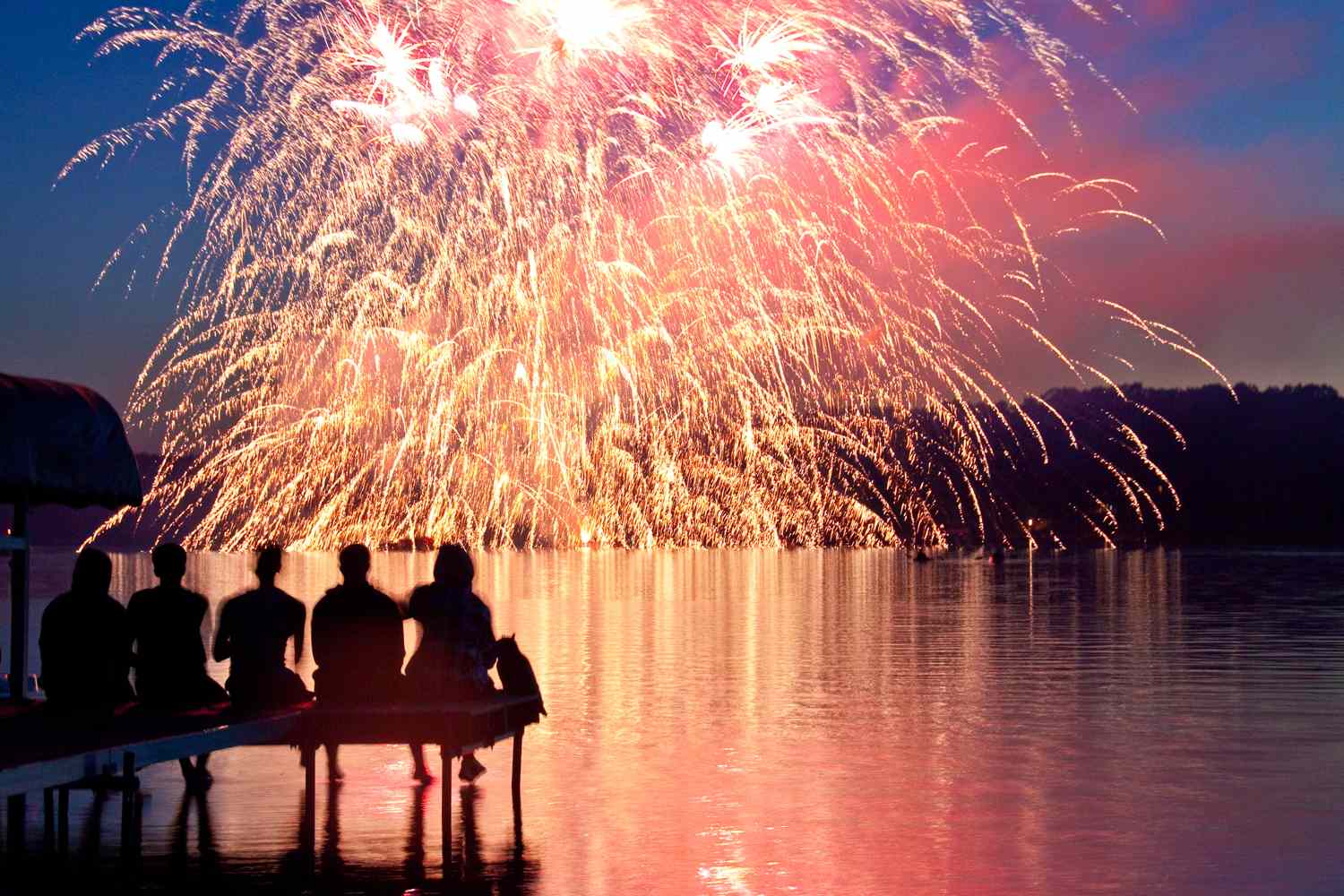The Fourth of July, or Independence Day, has been a celebrated tradition in the United States since 1776. Nearly 250 years later, cities and towns across the nation continue to commemorate the holiday with dazzling fireworks displays. But how did this explosive tradition become synonymous with American freedom?
This article explores the historical roots of fireworks on the Fourth of July, tracing back to the initial celebrations of independence and the evolution of this vibrant custom. Join us as we uncover the origins of this beloved tradition and its enduring significance in American culture.
We will delve into:
- The original Independence Day celebrations and John Adams’ vision
- The role of fireworks in early commemorations
- The invention and spread of fireworks
- The evolution of the Fourth of July into a federal holiday
The Original Independence Day
Celebrations of Independence Day began even before the Revolutionary War concluded. On July 2, 1776, the Second Continental Congress voted to declare independence from Great Britain. John Adams foresaw that July 2 would be a momentous occasion, writing to his wife, Abigail, that it should be celebrated with “Pomp and Parade…Games, Sports, Guns, Bells, Bonfires and Illuminations from one End of this Continent to the other,” according to the Massachusetts Historical Society.
Despite the vote for independence occurring on July 2, the Declaration of Independence was adopted two days later, on July 4. From that day forward, Americans recognized the Fourth of July as the country’s Independence Day.
“I am apt to believe that it will be celebrated, by succeeding Generations, as the great anniversary Festival. It ought to be solemnized with Pomp and Parade, with Shews, Games, Sports, Guns, Bells, Bonfires and Illuminations from one End of this Continent to the other from this Time forward forever more.” – John Adams
Why Do We Celebrate the Fourth of July with Fireworks?
Following the first public readings of the Declaration of Independence in 1776, the festivities traditionally held for King George III’s birthday—including concerts, bonfires, parades, and cannon firings—were adopted for the July 4 celebrations. The first organized Fourth of July celebrations in Philadelphia on the anniversary of the Declaration of Independence in 1777 truly highlighted fireworks.
In Philadelphia, considered the birthplace of America, a cannon fired a 13-gun salute to honor the Thirteen Colonies on July 4, 1777. The evening concluded with the ringing of bells and a grand exhibition of fireworks, which began and ended with thirteen rockets, according to the Pennsylvania Evening Post.
The celebrations extended to Boston, where fireworks were also displayed over the Boston Common that same year. The tradition of illuminating the sky continued each July Fourth thereafter.
When Were Fireworks Invented?
Americans weren’t the first to celebrate with fireworks. Firecrackers originated in ancient China, where bamboo was thrown into fires to make it pop. The invention of gunpowder in China between 600-900 A.D. led to more advanced fireworks, according to the American Pyrotechnics Association.
Fireworks eventually made their way to Europe, where they were incorporated into celebrations and festivals by the 15th century. European settlers brought this tradition to America, celebrating important occasions with light shows.
While modern pyrotechnics are more advanced, the Founding Fathers experienced illuminated skies during their celebrations. Colorful and complex displays similar to today’s fireworks didn’t appear until the 19th century.
When Did the Fourth of July Become a Federal Holiday?
In 1781, Massachusetts was the first state to recognize July Fourth as a state holiday. After the War of 1812, observing the holiday became a popular nationwide tradition. In 1870, Congress made Independence Day a federal holiday, as it had become the most important secular holiday, according to the Library of Congress.
Starting in 1941, all federal employees were granted a paid holiday on July 4 to celebrate the anniversary of Independence Day.
Modern Celebrations of Independence Day
Today, Fourth of July celebrations include a variety of traditions, from parades and barbecues to concerts and, of course, fireworks. Many cities and towns host large-scale fireworks displays that draw crowds of people eager to celebrate the nation’s birthday.
Technological advancements have enhanced fireworks displays, creating more intricate and spectacular shows. These modern displays continue to honor the spirit of the original celebrations, illuminating the sky with vibrant colors and patterns.
Despite changes over the years, the core values of freedom and independence remain central to Fourth of July celebrations, reminding Americans of the principles upon which the nation was founded.
Conclusion
The tradition of celebrating the Fourth of July with fireworks dates back to the earliest days of American independence. Inspired by John Adams’ vision of “illuminations from one end of this continent to the other,” fireworks became a symbol of freedom and celebration.
From their ancient origins in China to their adoption by European settlers, fireworks have evolved into elaborate displays that captivate audiences each year. The Fourth of July became a federal holiday in 1870, solidifying its importance in American culture.
As we celebrate Independence Day, we honor the historical significance of fireworks and their role in commemorating the nation’s birth. Whether watching a grand fireworks display or participating in local festivities, the spirit of freedom and independence continues to shine brightly on this special day.

Leave a Reply